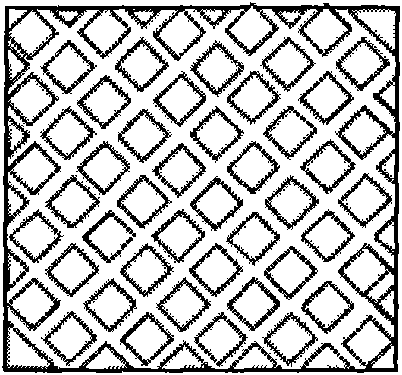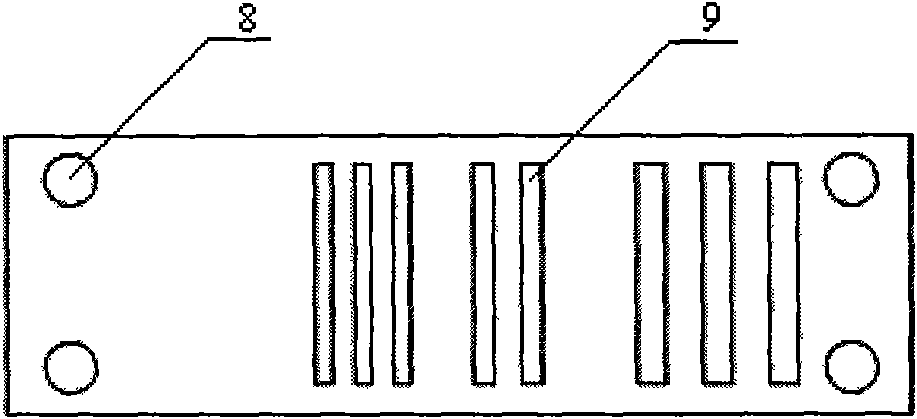Foot pad for wet-adhesion wall climbing bio-robot
A wall-climbing robot and foot pad technology, applied in the field of bionics, to achieve the effects of easy processing, reduced contact area, and simple structure
- Summary
- Abstract
- Description
- Claims
- Application Information
AI Technical Summary
Problems solved by technology
Method used
Image
Examples
Embodiment Construction
[0025] The present invention will be further described below in conjunction with the embodiments shown in the accompanying drawings.
[0026] Foot pads for bionic wet-suction robots, such as figure 1 As shown, it mainly includes a curved surface with a microstructure, a bionic fiber slant in the middle layer and a silicone plane 7 .
[0027] The curved surface with microstructure is divided into three parts: smooth curved surface 1 at the front end of the foot pad, central plane 2 of the foot pad, and smooth curved surface 3 at the rear end of the foot pad. The projected area of the smooth curved surface 1 at the front end of the foot pad is 25mm×30mm, the radius of curvature is 44mm, the height after bending is 10mm, and there is no microstructure on the surface. The area of the central plane 2 of the foot pad is 25mm×12mm, and the surface has a microstructure pattern with a side length of 0.2mm, a height of 0.3mm, and a spacing of 0.1mm, such as figure 2 As shown, th...
PUM
 Login to View More
Login to View More Abstract
Description
Claims
Application Information
 Login to View More
Login to View More - R&D Engineer
- R&D Manager
- IP Professional
- Industry Leading Data Capabilities
- Powerful AI technology
- Patent DNA Extraction
Browse by: Latest US Patents, China's latest patents, Technical Efficacy Thesaurus, Application Domain, Technology Topic, Popular Technical Reports.
© 2024 PatSnap. All rights reserved.Legal|Privacy policy|Modern Slavery Act Transparency Statement|Sitemap|About US| Contact US: help@patsnap.com










